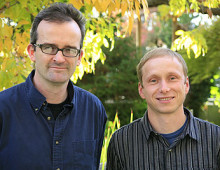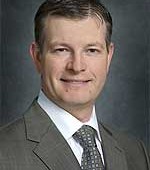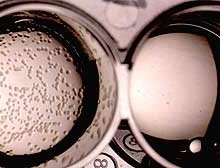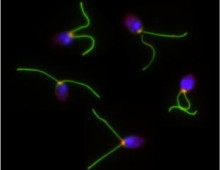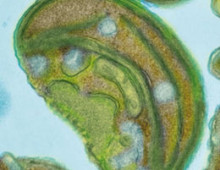WALNUT CREEK, CA–Termites — notorious for their voracious appetite for wood, rendering houses to dust and causing billions of dollars in damage per year — may provide the biochemical means to a greener biofuel future. The bellies of these tiny beasts actually harbor a gold mine of microbes that have now been tapped as a…
DOE Joint Genome Institute’s Pennacchio Wins Presidential Early Career Award
WALNUT CREEK, CA–Len Pennacchio, Genetic Analysis Program Head at the U.S. Department of Energy Joint Genome Institute (JGI) and senior staff scientist in the Genomics Division of Lawrence Berkeley National Laboratory, is among this year’s recipients of The Presidential Early Career Award for Scientists and Engineers (PECASE). Pennacchio was recognized for his significant contributions to…
Massive Reanalysis of Genome Data Solves Case of the Lethal Genes
WALNUT CREEK, CA–It is better to be looked over than overlooked, Mae West supposedly said. These are words of wisdom for genome data-miners of today. Data that goes unnoticed, despite its widespread availability, can reveal extraordinary insights to the discerning eye. Such is the case of a systematic analysis by the U.S. Department of Energy…
Green Alga Genome Project Catalogs Carbon Capture Machinery and Reveals Identity as Ancient Cousin of Land Plants and Animals
WALNUT CREEK, CA–The genome analysis of a tiny green alga has uncovered hundreds of genes that are uniquely associated with carbon dioxide capture and generation of biomass. Among the 15,000-plus genes revealed in the study are those that encode the structure and function of the specialized organelle that houses the photosynthetic apparatus, the chloroplast, which…
Upgraded Integrated Microbial Genomes (IMG) Data Management System Released by DOE JGI to Eager User Community
WALNUT CREEK, CA–A powerful set of computational tools established to ease the visualization and exploration of genomes flooding the public domain is now available in IMG Version 2.3–the Integrated Microbial Genomes (IMG) data management system hosted by the U.S. Department of Energy Joint Genome Institute (DOE JGI). The content of IMG 2.3, upgraded with new…
DOE Joint Genome Institute Secures Long-Term Lease on Production Genomics Facility
WALNUT CREEK, CA–The U.S. Department of Energy Joint Genome Institute (DOE JGI) has secured a five-year extension on its lease with an option for an additional five years. The University of California Regents have signed off on a deal with landlord Hall Equities Group that will ensure DOE JGI’s long-term presence in the community of…
DOE JGI Upgrades its Microbial Genome Analysis System
WALNUT CREEK, CA–Rising to accommodate the scientific community’s interest in harnessing the potential of the microbial world, the U.S. Department of Energy Joint Genome Institute (DOE JGI) has made Version 2.2 of the Integrated Microbial Genomes (IMG) data management system available to the public. The new version of IMG contains a total of 2,815 genomes…
DOE Joint Genome Institute Announces 2008 Genome Sequencing Targets
WALNUT CREEK, CA–Toward the goal of harnessing the power of nature through DNA sequencing, the DOE Joint Genome Institute (DOE JGI) has announced the latest Community Sequencing Program (CSP) portfolio. These plant and microbial targets–most with implications for helping wean the nation’s dependence on fossil fuel–total some 21 billion nucleotides of DNA sequence capacity allocated…
DOE JGI Sets ‘Gold Standard’ for Metagenomic Data Analysis
WALNUT CREEK, CA–With the advent of more powerful and economical DNA sequencing technologies, gene discovery and characterization is transitioning from single-organism studies to revealing the potential biotechnology applications embedded in communities of microbial genomes, or metagenomes. The field of metagenomics is still in its infancy–the equivalent of the early days of the California Gold Rush,…
Puzzling Plankton Yield Secrets to Role in Evolution/Global Photosynthesis
WALNUT CREEK, CA–The analysis of DNA sequences from tiny green algae have provided new insights into the mystery of how new species of plankton evolve–and further highlights their critical role in managing the global cycling of carbon. These findings, by a group led by the DOE Joint Genome Institute (DOE JGI); the Scripps Institution of…
